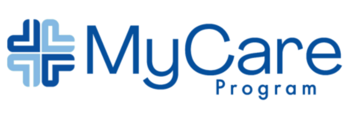Condition: Ankylosing Spondylitis (AS)
Brief Overview: Ankylosing spondylitis is a chronic inflammatory disease primarily affecting the axial skeleton, including the spine and sacroiliac joints. It can lead to pain, stiffness, and progressive fusion of the spine, resulting in reduced mobility and posture changes.
Prevalence: Ankylosing spondylitis affects approximately 0.1-1.4% of the population, with higher prevalence in men and onset typically between ages 15-35.
Etiology: The condition is thought to result from a combination of genetic predisposition (strongly associated with the HLA-B27 gene) and environmental triggers, leading to immune-mediated inflammation.
Risk Factors:
• Positive HLA-B27 genetic marker
• Family history of ankylosing spondylitis
• Male sex
• Early adulthood onset
Commonly Associated Conditions:
• Uveitis
• Inflammatory bowel disease (Crohn’s disease, ulcerative colitis)
• Psoriasis
• Osteoporosis
• Cardiovascular disease
Common Medications:
• Nonsteroidal anti-inflammatory drugs (NSAIDs)
• Tumor necrosis factor (TNF) inhibitors
• Interleukin-17 (IL-17) inhibitors
• Corticosteroids (for localized inflammation)
• DMARDs for peripheral arthritis
Common Labs, Imaging, and Tests:
• HLA-B27 genetic testing
• C-reactive protein (CRP) and erythrocyte sedimentation rate (ESR) for inflammation markers
• X-rays (sacroiliitis, bamboo spine)
• MRI for early detection of sacroiliitis
Common Symptoms:
• Chronic low back pain and stiffness, especially in the morning or after inactivity
• Pain improvement with exercise and worsening with rest
• Reduced spinal mobility and posture changes (e.g., kyphosis)
• Peripheral joint pain in some cases
• Fatigue
Common Treatments:
• NSAIDs for pain and inflammation control
• Biologic agents (e.g., TNF or IL-17 inhibitors) to slow disease progression
• Physical therapy to maintain posture and mobility
• Exercise programs focusing on flexibility and strength
Physical Findings:
• Loss of lumbar lordosis and increased thoracic kyphosis
• Tenderness over sacroiliac joints
• Limited range of motion in the spine
• Positive Schober’s test (restricted lumbar flexion)
Potential Complications and Contraindications:
• Spinal fusion leading to severe rigidity
• Increased risk of vertebral fractures
• Cardiovascular complications (e.g., aortic valve disease)
• Contraindications for biologics in patients with active infections
General Health and Lifestyle Guidance:
• Encourage regular exercise, including swimming, yoga, tai chi, and walking.
• Maintain good posture and ergonomic practices
• Avoid smoking to reduce cardiovascular and inflammatory risks
• Ensure a whole foods, balanced diet
Suggested Questions to Ask Patients:
• Do you experience back pain that improves with exercise?
• Have you noticed morning stiffness lasting more than 30 minutes?
• Has your range of motion or flexibility worsened?
• Have you experienced symptoms like eye pain or digestive issues?
Suggested Talking Points:
• Explain the progressive nature of the disease and the importance of early treatment.
• Reassure patients that effective therapies can manage symptoms and slow progression.
• Discuss the role of exercise and physical therapy in maintaining flexibility and preventing stiffness.
• Emphasize the need for regular follow-ups to monitor for complications.
• Discuss fall risk precautions if the patient has stiffness and poor flexibility.
